VALE DAVID ATKINS (8th June 1942 – 4th Jan 2021)
Many gathered to pay their respects to and celebrate a most remarkable person who made a sizeable contribution to our community, Wayne David Atkins, fondly known as Akky by many. David had a life-long keen interest in bushwalking and skiing and, more latterly, bicycling as well as caving and conservation in his earlier years. He greatly enjoyed these and generously put considerable effort into serving the community to foster, share and protect these interests.
 David joined the Launceston Walking Club (LWC) when 16 years old. I first met him about 50 years ago when encountering an LWC walk at Lake Promontory in poor weather. There he was helping cut wood for a fire to make his party more comfortable; it was obvious he had come well prepared for the conditions. Later I spent many years working closely with him on behalf ofTasmania’s peak bushwalking body, and the national bushwalking body. I found David utterly dedicated to protecting bushwalking in Tasmania, and nationally. He was always reliable, supportive and helpful. During that time I never heard him grumble about the work involved, even if he did about some wanting to cull some aspect of customary bushwalking.
David joined the Launceston Walking Club (LWC) when 16 years old. I first met him about 50 years ago when encountering an LWC walk at Lake Promontory in poor weather. There he was helping cut wood for a fire to make his party more comfortable; it was obvious he had come well prepared for the conditions. Later I spent many years working closely with him on behalf ofTasmania’s peak bushwalking body, and the national bushwalking body. I found David utterly dedicated to protecting bushwalking in Tasmania, and nationally. He was always reliable, supportive and helpful. During that time I never heard him grumble about the work involved, even if he did about some wanting to cull some aspect of customary bushwalking.
Apart from David’s greatly valued efforts for the Launceston Walking Club (LWC), who awarded him Life Membership in 1980, there is his huge service to the wider community stemming from his appointment as a Delegate of that Club to the Federation of Tasmanian Bushwalking Clubs (FTBC), which has since transformed itself into Bushwalking Tasmania (BWT), to represent all Tasmanian bushwalkers. As a well engaged and valued member of the two State bushwalking organisations, David was soon appointed to key roles, and held important roles for many years; at least 21 years. At various times he was elected President or Secretary.
David was very active representing both the LWC and the wider Tasmanian bushwalking community through his actions and words. David had some particularly useful attributes for such key positions. He was prepared to take on roles and duties that others shied from. Whether a key role or not, David was always prepared to stand up to the unreasonable and stubborn who acted against Tasmanian walker interests. David was persistent when merited. Sometimes David showed quite a sense of humour in adverse situations – usually dry, so not recognized by all. On the odd occasion he would deliberately show emotive anger to a Minister of the head of PWS. This sometimes put them on the back-foot.
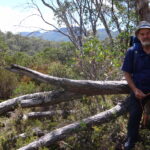 David was unafraid to speak bluntly or write a blunt letter when he disagreed with something. There was a decisive late letter sent to the then Nomenclature Board when Parks wanted to delist two used tracks, that would have the consequence of barring anyone marking or maintaining the tracks. The Board thought it wise to have a recreation person on their body. Delegates to Bushwalking Tasmania very much appreciated David’s dedication, work and passion, and felt comfortable about his representingtheir views, even if not some of his spelling.
David was unafraid to speak bluntly or write a blunt letter when he disagreed with something. There was a decisive late letter sent to the then Nomenclature Board when Parks wanted to delist two used tracks, that would have the consequence of barring anyone marking or maintaining the tracks. The Board thought it wise to have a recreation person on their body. Delegates to Bushwalking Tasmania very much appreciated David’s dedication, work and passion, and felt comfortable about his representingtheir views, even if not some of his spelling.
When a national bushwalker body was to be formed, David attended the inaugural meeting and joined the inaugural governing body. He served on that Bushwalking Australia Council for 18 years, including as the national Secretary from 2016 to 2019, leaving just over a year ago when Genevieve, his wife, took up a position in Queensland. When national bushwalker conferences were to be held in Tasmania. David took care of the local logistics, accommodation and eating arrangements for all attendees. He certainly made sure of good value without things being scrappy – well done David! He even went out of his way to do airport pickups, apparently most at his own expense. This is the kind of thing that is invaluable to volunteer organisations who have limited funds.
David cared about how walkers and volunteers were treated. For instance, he put effort into arranging facilities and some nibbles for volunteers when re-establishing the Cuvier Track. This included free shelter, showers and kitchen facilities. This kind of effort helps attract volunteers, and shows appreciation. In recognition of his lengthy, broad and deep service, Bushwalking Tasmania has received emails of condolence from all over Australia, as well as diverse places and people in Tasmania. A rare honour!
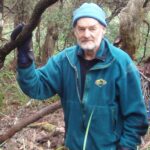
David’s love of the bush and his passion to ensure that bushwalkers retain rights of access to all areas of the bush is one of his many enduring legacies. During his service for Bushwalking Tasmania, at various times, a Minister of the day appointed him and another BWT person to an additional body to deal with particular issues. A key group was the Track Assessment Group that eventually overturned a plan for an expensive booking system for all overnight walking in the Tasmanian
Wilderness World Heritage Area. That would have seen a major decline in our ability to walk in the TWWHA due to unreasonably low walker quotas. The Track Assessment Group met for two days a month over three years, often with considerable pre-meeting material to read – it required considerable effort and dedication.
Many remember David’s determination and fight to ensure bushwalkers would continue to have access to the Cape Pillar area. It was intended that we walkers would no longer be able to do overnight walks in the area unless doing an expensive hut to hut walk, although Tasmanian bushwalkers had put in thousands of man-days to make the first tracks and campsites to establish the great coastal bushwalking there.
After petitioning and meeting the Minister about our concerns, we were appointed to the Three Capes Reference Group. David & I did several trips to the Cape Pillar/Three Capes area to plot all the campsites then ask we retain only three existing sites as formal sites to continue our customary use of the area. At his own initiative, David saw the local council and promptly got them on side. After three years pushing to retain customary access and use, the goal was achieved.
During our efforts to reach the goal, David & I spent two days hiding from helicopters that were carrying building materials for the 3CT. That trip was to inspect and map all sites with evidence of camping. At the time, the whole 3CT area was actually closed to walkers, but we needed the data to argue our position to retain the most suitable campsites for Tasmanian walkers. Should we have been sprung, I suppose we could have said we were doing it for the Minister.
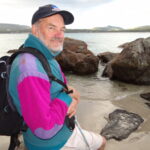
In general, David spoke strongly on behalf of walkers whenever he saw unreasonable encroachments on walkers’ customary use. For instance, we made many representations and wrote several submissions to stop over-zealous constraints on walkers doing their well-established overnight walks that use part of Overland Track. Some of the constraints had put walkers in danger. David also spoke publicly strongly against the upmarket commercial development of Lake Malbena in the TWWHA. David saw the rationale for these as commercialism displacing customary use for the benefit of the wealthier. Something many more now recognize as happening more generally. David was so strongly opposed to the Overland Track constraints, he attended many a meeting in Hobart and elsewhere to help loosen the constraints.
David helped write countless other submissions on behalf of Tasmanian bushwalkers over many years with BWT & FTBC. It can take considerable effort to write submissions that have to research then articulate and justify the walker position when plans are based on opposing values.
David was so committed to seeing walkers maintain their ability to communicate their issues, that for the first half of 2020, he voluntarily filled in as Secretary for BWT while in Queensland. Thus, David is one of the very few to receive a certificate of award from Bushwalking Tasmania to recognize his outstanding service to bushwalking. The award is so well deserved. He held BWT together at one time when all other delegates would have BWT serve them; quite a responsibility for him.
I also met David at Ben Lomond associated with skiing and skiing races. There he belonged to a neat lodge, Ben Bullen along the Carr Villa Track to Legges Tor. At Ben Lomond David often appeared early in the day to help set up and run skiing races for a number of years where I was able to help him carry the considerable equipment using an oversnow vehicle.
These few examples of what David willingly did, demonstrate the community-minded effort David was prepared to make on behalf of all Tasmanians, many of whom remain unaware of the efforts that are required to maintain our way of life.
Of course David & I did a few walks. These mainly in his later years where we often had to talk about and resolve walking issues. In his positions with Bushwalking Tasmania, he was a gracious host in order to facilitate meetings and discussions. I was privileged to stay at his and Genevieve’s home and beach house many times to facilitate bushwalking business. David was also prepared to drive from one end of the State to another to get bushwalking business done. On many occasions he drove to the south or far south to meet Ministers, the head of PWS, other PWS staff or myself. One time he drove all the way to Strathgordon just to have a brief meeting with an HEC officer to pursue access over the Gordon Dam. It was such selfless effort!
David will be remembered and appreciated by the LWC, BWT, BAI and others for the dedicated passionate person he was and for his enormous contribution towards making LWC & BWT what they are today. He will be honoured and remembered at the Tasmanian Arboretum, as his name W. David Atkins will be added to the LWC Deceased Life Members tree.
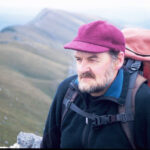 David’s main recreational legacy additional to the achievements mentioned, is that more Government Authorities now realise that Tasmanian walkers are keen to have their customary recreation and traditional uses protected. Most Authorities have, and are taking more action to aid this. There is also the legacy of the conservation movement in Tasmanian that David helped initiate, stemming from the flooding of Lake Peddar. Many individuals benefitted by learning about how to handle themselves well in the bush or on snow via Scouting, club and family events that David coordinated or was heavily involved in. …
David’s main recreational legacy additional to the achievements mentioned, is that more Government Authorities now realise that Tasmanian walkers are keen to have their customary recreation and traditional uses protected. Most Authorities have, and are taking more action to aid this. There is also the legacy of the conservation movement in Tasmanian that David helped initiate, stemming from the flooding of Lake Peddar. Many individuals benefitted by learning about how to handle themselves well in the bush or on snow via Scouting, club and family events that David coordinated or was heavily involved in. …
It was such an unexpected loss of so remarkable a person. David will be hard to replace, and much missed. We are privileged to have known him. His was a life well lived. I for one will miss David greatly – and wish that he may enjoy great walking throughout eternity.
On behalf of Bushwalking Tasmania, Bushwalking Australia, Bushwalking Queensland, Bushwalking NSW Inc., Walking SA, Hobart Walking Club, Circular Head Walking Club, Launceston Ramblers Club, HikeWest (formerly Bushwalking Western Australia), Bushwalking Victoria and personally I extend my deepest sympathy and best wishes to Genevieve, David’s children, grandchildren, siblings and other relatives, and all of his friends.
Dr Andrew Davey
President, Bushwalking Tasmania
Council Member, Bushwalking Australia

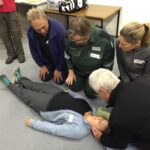
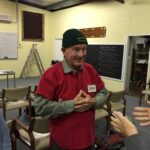
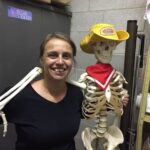
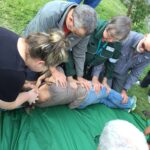
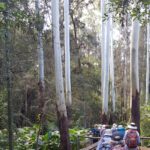
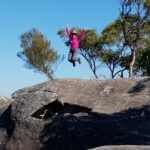
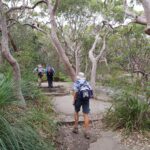
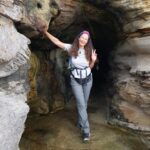
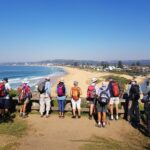
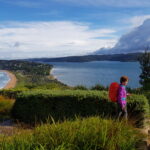
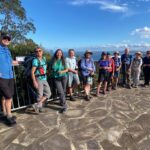
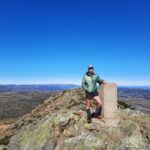
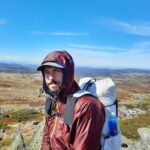
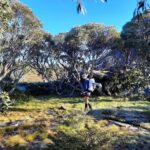
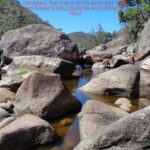
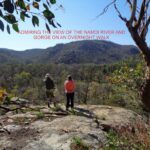
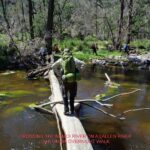
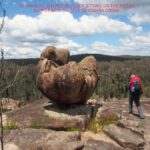
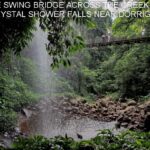
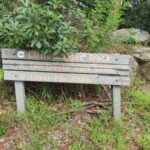
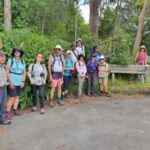
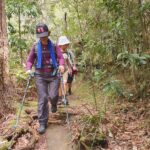
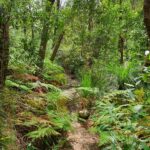
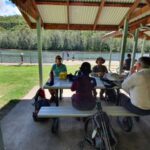
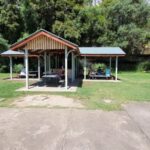
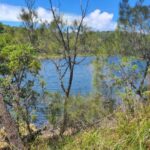
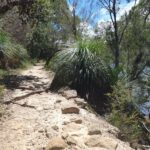
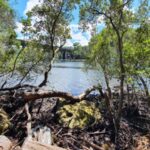
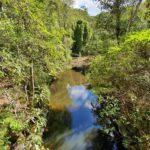
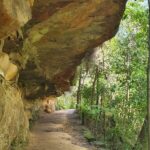
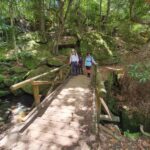
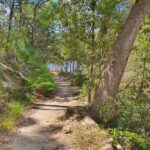
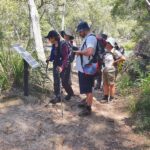
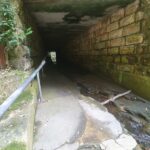
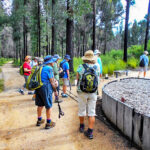
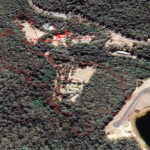
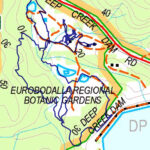
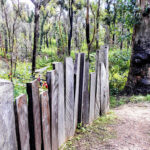
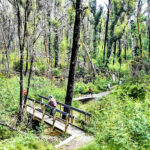
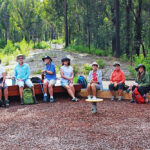
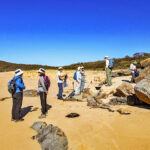
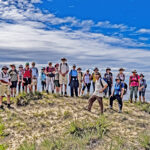




 David’s main recreational legacy additional to the achievements mentioned, is that more Government Authorities now realise that Tasmanian walkers are keen to have their customary recreation and traditional uses protected. Most Authorities have, and are taking more action to aid this. There is also the legacy of the conservation
David’s main recreational legacy additional to the achievements mentioned, is that more Government Authorities now realise that Tasmanian walkers are keen to have their customary recreation and traditional uses protected. Most Authorities have, and are taking more action to aid this. There is also the legacy of the conservation